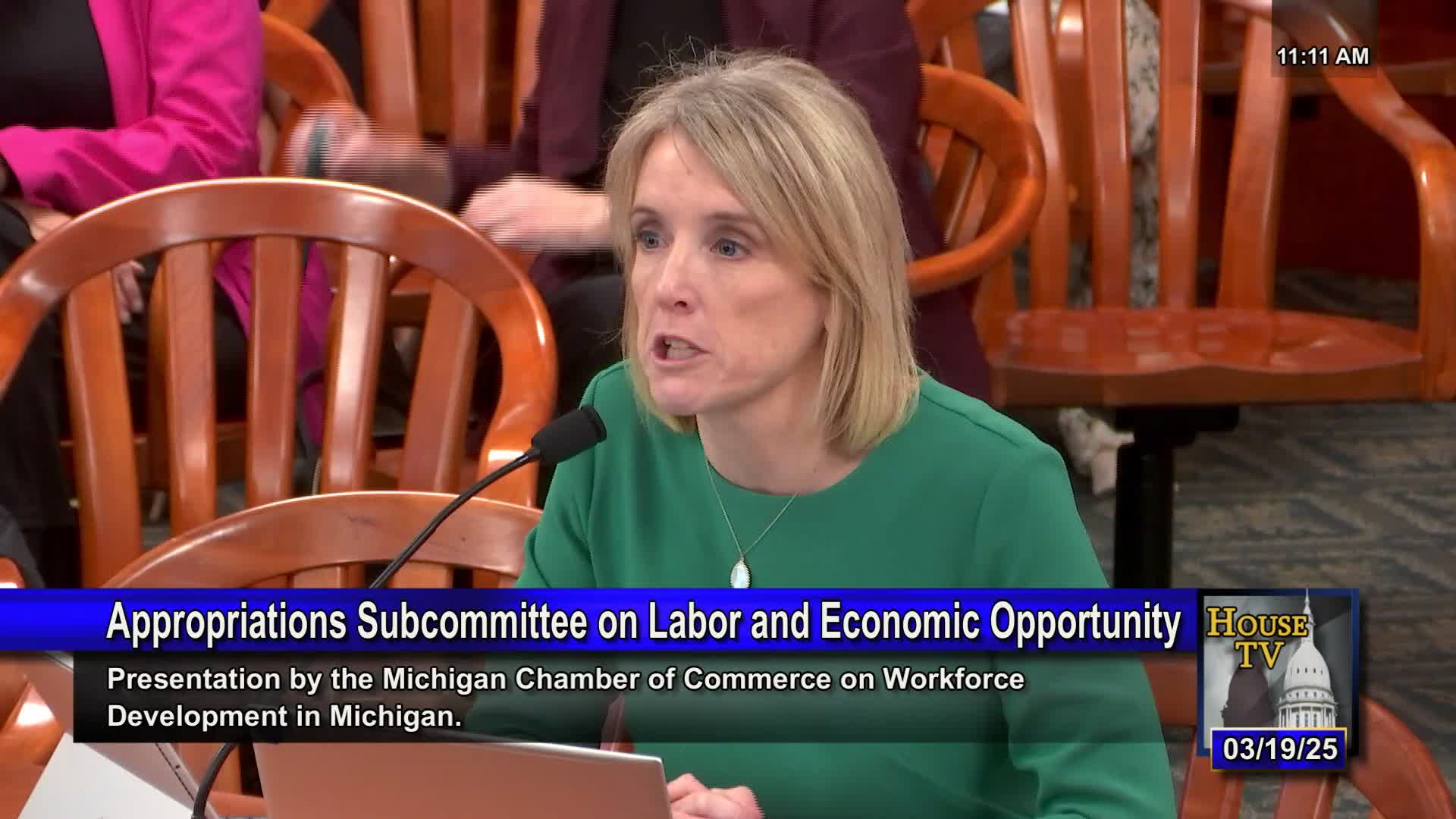Michigan businesses confront serious workforce shortages amid aging population and skills gap
March 19, 2025 | Appropriations - Labor and Economic Opportunity, Appropriations, House of Representative, Committees , Legislative, Michigan
Thanks to Scribe from Workplace AI , all articles about Michigan are free for you to enjoy throughout 2025!

This article was created by AI using a video recording of the meeting. It summarizes the key points discussed, but for full details and context, please refer to the video of the full meeting. Link to Full Meeting
The committee members expressed deep concern over the state's aging population, which has rapidly transformed Michigan into the fourteenth oldest state in the nation. This demographic trend poses a critical question: who will fill the jobs left vacant by retiring baby boomers and Gen Xers? The urgency of this issue was palpable, as members noted that the state's labor force participation rate has plummeted from nearly 70% in the late 1990s to around 62% today. This decline raises alarms for businesses contemplating growth in Michigan, as they grapple with the reality of a shrinking workforce.
Compounding these challenges is a mismatch between the skills employers require and the qualifications of available job seekers. A staggering 79% of employers reported difficulties in finding suitable candidates, underscoring the need for improved workforce training and education. The committee emphasized that barriers traditionally viewed as employee issues—such as access to affordable childcare, housing, and transportation—are now critical concerns for employers as well.
Michigan's unemployment rate, currently at 5.2%, ranks as the forty-seventh highest in the nation, further complicating the landscape. While there have been improvements since the pandemic, the committee acknowledged the need for better alignment between job seekers and available positions.
As the meeting concluded, the overarching theme was clear: Michigan must address its workforce challenges head-on. With an aging population and a declining labor force participation rate, the state faces a pivotal moment. The discussions underscored the importance of collaborative efforts to create a more robust workforce, ensuring that Michigan can meet the demands of its employers and secure a prosperous future for its residents.
Converted from Appropriations - Labor and Economic Opportunity Wednesday, March 19, 2025 meeting on March 19, 2025
Link to Full Meeting
Comments
View full meeting
This article is based on a recent meeting—watch the full video and explore the complete transcript for deeper insights into the discussion.
View full meeting
